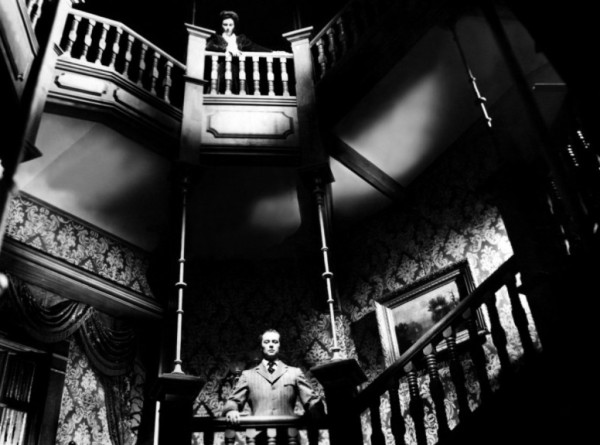Does the original cut of Orson Welles’ second feature, The Magnificent Ambersons, somewhere, somehow, exist? The movie is treated today as a lost treasure and model example of studio barbarism. The director, it could well be argued, is equally to blame for the tragic fate of his movie, as he seemed unwilling to put up a fight. The man was known to burn bridges as fast as he built them.
Firstly, let’s put the film by George Orson Welles in historical context. Citizen Kane (1941), despite an Oscar win (Best Writing), was not a hit and the best train set in the world, as he referred to Hollywood, would grow increasingly uncomfortable with the man labelled a creative genius. As we have seen countless times in American cinema, it doesn’t care or cater to the whims of talent when they do not produce the ‘right’ results. They’ll lavish praise whilst the going is good, but when the light of the projector fails to turn into money, things sour. The medium is as beguiling as the industry is savage.
The Magnificent Ambersons was based on the 1918 novel by Booth Tarkington and previously adapted by Welles’s stage outfit, the Mercury Theatre. The first cut, the director’s preferred edit, ran to 132 minutes. RKO, the film’s backers, considered the picture dour and too long. Poor test screenings panicked them into action. Executives described it as “long, dark and depressing”. Cuts were demanded, then re-writes and a new ending shot. Welles, away in Rio filming an eventually abandoned project, It’s All True, clearly decided the fight wasn’t worth the effort. RKO cut it down and released it and the film now runs to a mere 88 minutes. Needless to say the picture did virtually no business, and actually lost money. We might well say that for cinephiles and historians, The Magnificent Ambersons is our ‘Rosebud’ moment. As David Thomson has noted, the film was made following the “dismay that followed Kane”. A dark cloud already looming grew darker. Yet there are some who argue The Magnificent Ambersons is a superior motion picture to Citizen Kane, even in truncated, abused form.
Welles shot the film at the end of 1941 and into the first month of 1942 with Stanley Cortez acting as cinematographer. There were no great dramas on set and filming commenced without a hitch. It is said the director was a little impatient with the unadventurous but richly detailed eye of his DOP. Cortez’s deep-focus photography is exceptional, but is often eclipsed by the memory of Gregg Toland and Citizen Kane.
Another reason RKO was able to demand changes to the film were the amendments made to their contract with Welles. Citizen Kane was a disappointment to the studio, financially speaking, so they decided, for the next project, they would demand the right to final cut. Welles consented. There is talk of a power struggle, too. Studio president George Schaefer brought Welles to Hollywood under great fanfare and with a carte blanche contract. Schaefer was then locked in a power struggle with several rivals. Floyd Odlum took control of the studio with Charles Koerner as the new production chief and, according to Penelope Houston’s essay on Welles (Critical Dictionary of Cinema Vol 2, 1980), one industry rag’s headline ran: “Showmanship instead of genius: a new deal at RKO”.
On 4th February 1942 the director headed off to Rio de Janeiro to film a project concocted by the US government, along with with RKO, intended to improve relations between the two countries under the ‘Good Neighbor’ policy. Back in Los Angeles, Robert Wise edited Ambersons under studio supervision. Here’s where it gets interesting…
In David Thomson’s The Big Screen (2012), the historian and critic attests that: “The film existed as Welles wanted it, in a version that was flown down to Rio for him to look at and refine.”
The question is this: Was it ever sent back or does it remain somewhere in Rio? And here’s where it gets outrageous! Some years after its release and having a clearout, the studio decided to dump all the cut footage they had in their possession into the sea. If celluloid doesn’t turn into money it’s as good as garbage. Our dream of a freshly assembled cut drowned with the reels.
Thomson goes on to suggest that somewhere in an attic or archive down in Rio, the full 132 minutes Welles Cut is sat gathering dust. This is not as hopelessly romantic as it sounds as previously ‘lost’ pictures resurface from time to time. Fritz Lang’s Metropolis, the longest cut ever assembled for release, was found in a Bueno Aires film archive in 2008.
Why didn’t Welles go back and fight for his movie like any self-respecting artist would? Perhaps he knew fighting the studio was impossible and, after all, he’d consented to that contract amendment giving RKO final say.
The script for The Magnificent Ambersons survives along with production stills from now missing scenes. That’s all, quite sadly, we’ll ever have. Unless…












{ 1 comment… read it below or add one }
I saw the “lost” ending sometime in the early-to-mid 1950s. The last scene had George dying in the lap of his aunt, next to a dark , cold, radiator. All this stuff about the ‘original ending’ being lost or destroyed is B S – – it is somewhere.